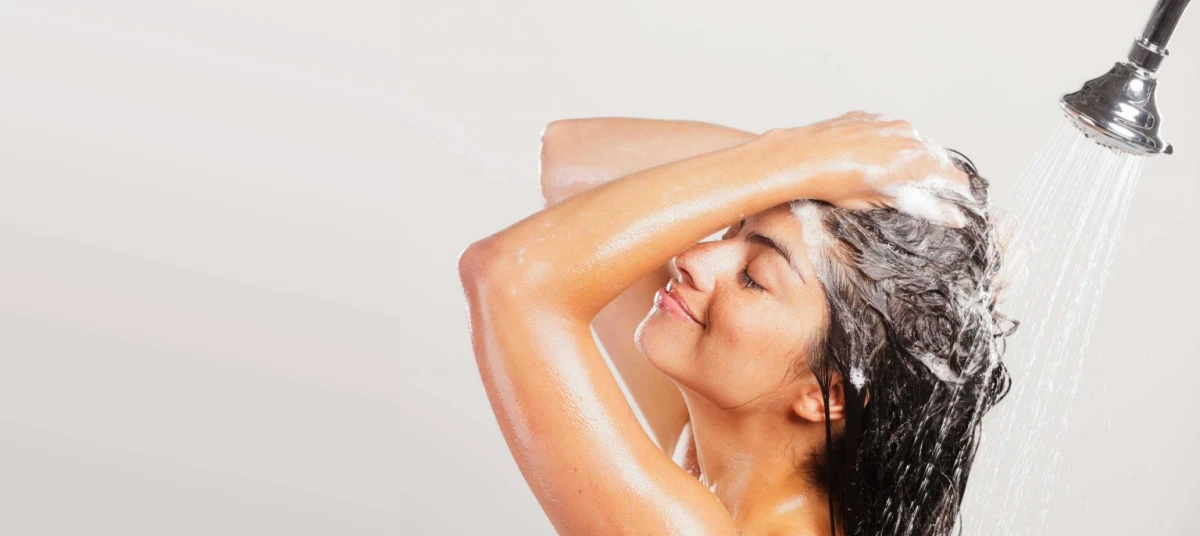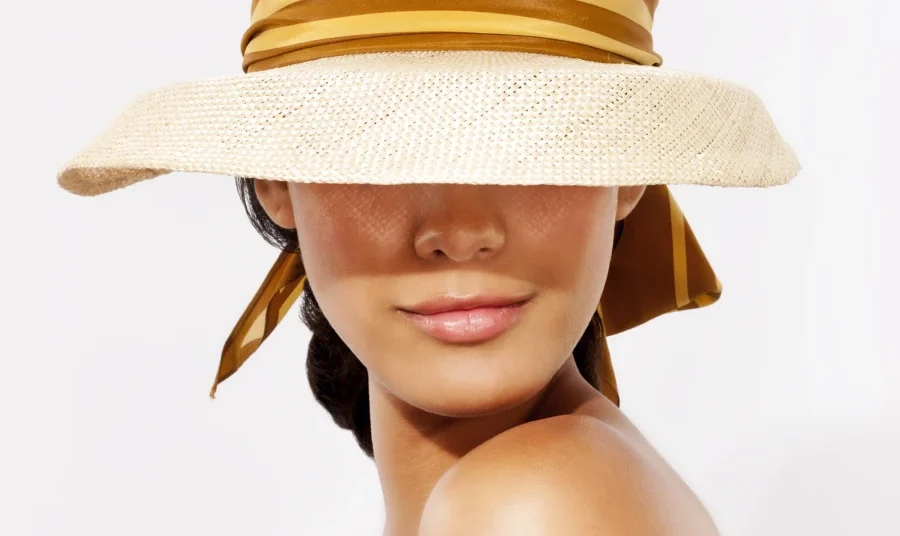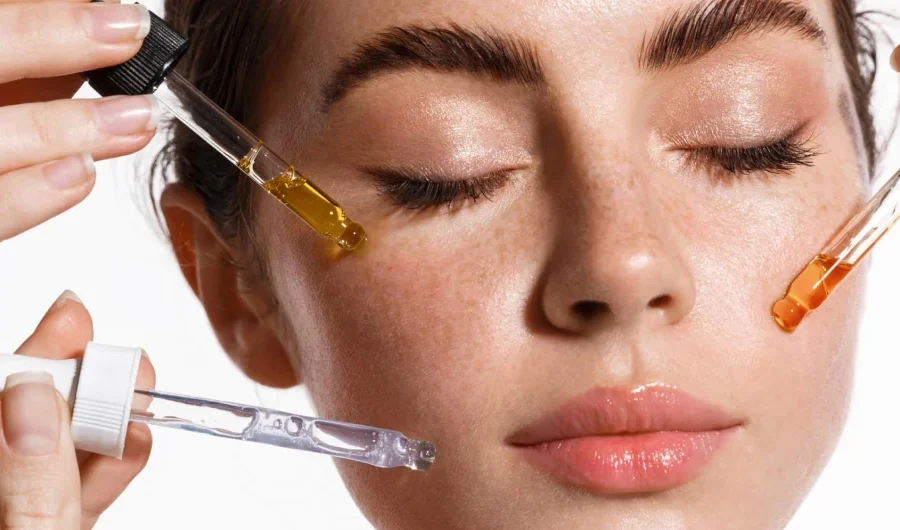Unveiling the secrets of the hair washing ritual to help maintain the condition and health of your locks.

How to Properly Wash Your Hair?
Washing your hair might seem like an ordinary routine. For most of us, preoccupied with daily tasks and deadlines, it’s a purely mechanical process not worth pondering over. However, the way you wash your hair significantly impacts its beauty and the health of your scalp.
So, what is the right way? Let’s figure it out!
Preparation for Hair Washing
Surprisingly, even such a routine procedure as washing your hair requires careful preparation: choosing the right products, knowing how to comb your hair without damaging the strands, and understanding how often you should wash your hair.
Choosing the Main Helpers: Shampoo and Conditioner
When selecting a shampoo, you should focus on your scalp type.
- For oily scalps, choose shampoos with seboregulating and anti-inflammatory ingredients like mint and eucalyptus. Avoid excessive oils as they can provoke greasiness.
- Recommended: Lador root re-boot activating shampoo cica & tea tree, Daeng Gi Meo Ri shampoo for oily scalp
- For dry scalps, look for moisturizing ingredients and avoid harsh surfactants.
- Recommended: YOPE shampoo hydrate for dry skin, La’dor Triplex Natural Shampoo
More about choosing the right shampoo can be found here.
As for the conditioner, it should be chosen based on the condition and needs of your hair rather than labels like “for oily,” “for dry,” or “for normal” hair.
- If your hair needs smoothing and softening, look for fatty alcohols, cationic surfactants, silicones, moisturizers, and plant oils in the conditioner.
- Recommended: Lador Damage Protector Acid Conditioner, YOPE 3-in-1 mask hydrate for dry hair, DAENG GI MEO RI Mise E Scene damage care rinse
- If you want to thicken the hair and define curls, look for proteins and avoid silicones.
- Recommended: EVO derm hair balm moisturization and nutrition, EVO derm restorative hair mask with coconut oil and proteins
More about choosing the right conditioner can be found in this article.
How Often Should You Wash Your Hair?
Spoiler: wash your hair as it gets dirty. This is obvious yet often forgotten. There’s a myth: “If you wash your hair less frequently, it will become less greasy over time.”
Remember: you cannot train your sebaceous glands to produce less sebum this way. Initially, it might seem like your scalp becomes less oily, but this is because sebum secretion gets disrupted, making it thick and viscous, which clogs pores. This can lead to seborrheic dermatitis.
To Comb or Not to Comb?
To avoid tangling, it’s recommended to comb your hair before washing. Generally, it’s best to comb from the ends to the roots, gradually and gently detangling knots. If you have long hair, this method is the least damaging.
For short hair that doesn’t tend to tangle, you can safely comb from roots to ends.
Curly hair should not be combed dry if you want to avoid frizz and tangles. Instead, comb curly hair during the conditioning stage, using plenty of conditioner/mask and water. This helps maintain the beauty and elasticity of the curls.
Washing Your Hair Correctly: A Step-by-Step Tutorial
How do you properly wash your hair to thoroughly clean the scalp without damaging the length? What is the optimal water temperature, and how do you use conditioner effectively? Surprisingly, not many know the answers to these questions. Yet, this is one of the keys to beautiful and healthy hair!
Adjust the Water Temperature
The temperature of the water significantly affects the condition of your hair and scalp. Too hot water dries out the hair, damaging its structure, and provokes excessive sebum production and dandruff. Conversely, cold water makes it difficult to cleanse the scalp thoroughly, as shampoo doesn’t lather or rinse out well.
The optimal water temperature for washing hair is 36–40°C (slightly above body temperature).
Apply Shampoo
Before applying shampoo, thoroughly wet your hair. Never apply shampoo directly from the bottle onto your hair! This is wasteful and hard to distribute evenly.
First, apply shampoo to your palm, lather it slightly, and then apply it to the scalp (not the hair). Massage the scalp with your fingertips. You can also use special silicone brushes for washing your head. A gentle massage improves blood circulation, positively impacting hair growth.
Rinse the Shampoo
After applying and distributing the shampoo, it needs to be rinsed off with plenty of warm water. You can rinse the shampoo off by tilting your head back or forward. However, if your back skin is prone to acne, it’s better to rinse with your head down to avoid irritation and prevent new breakouts.
Continue to massage the scalp while rinsing. Don’t rub your hair—it will clean well with the foam running down its length. In the end, the water should be clear and transparent.
Apply Conditioner
After shampooing, you need to balance the pH, close the cuticles, and remove static. This is where conditioners/masks/balms come in. Apply the chosen product to the hair length, avoiding the roots, gently squeeze the strands with your hands to help the active ingredients adhere better to the hair. Leave it on for 2-5 minutes and rinse off. For deep conditioning, you can leave the product on for up to half an hour.
What About Additional Care?
Proper washing and conditioning are the basics for healthy-looking hair (aside from lifestyle and diet). Even if you use expensive professional products, you can’t skip these steps. But if you want to maintain your hair’s beauty longer, don’t forget about additional care.
Hair Care Masks and Serums
Hair masks work similarly to conditioners. The difference is that masks usually have more active ingredients and a richer composition. Apply them to clean hair, avoiding the roots, leave on for 10-30 minutes, and rinse.
Leave-in products like serums, milk, or creams are applied to clean, towel-dried hair. They form a protective film on the hair’s surface, protecting it from external factors such as temperature fluctuations, heat styling, sunlight, and wind. Additionally, they soften and smooth the ends, preventing split ends.
To Blow-Dry or Not to Blow-Dry?
One of the most common hair care mistakes is avoiding the hairdryer, thinking it dries out the hair. In reality, wet hair is much more vulnerable and easily damaged, so natural drying is not the best option. Remember: you should blow-dry your hair!
To make this process less damaging, here are some tips:
- Choose a hairdryer with a power of at least 2000W.
- Never use hot air, only warm, or better, cold air.
- Blow-dry your hair in the direction of its growth to avoid opening the cuticles.



Leave a Comment